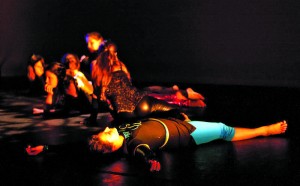Government looks to repeal “Don’t Ask, Don’t Tell”
This fall, the Senate fell two votes short of repealing the “Don’t Ask, Don’t Tell” discriminatory policy, also known as DADT. The policy was instituted by former President Bill Clinton in 1993 and prohibits the military from questioning troops about their sexual orientation, and enforces the discharge of anyone who admits to being lesbian, gay or bisexual. DADT has led to the expulsion of over 13,000 troops and has discriminated against those who are trying to serve the United States.
Seventeen years later, President Barack Obama, Chairman of the Joint Chiefs of Staff Admiral Michael Mullen, Secretary of Defense Robert Gates, former Secretary of State General Colin Powell, the military, and U.S. troops have all shown support their support to finally repeal the policy.
The Pentagon Study, a survey completed by military personnel and family revealing their views of gays serving in the military, discovered that the repeal of DADT would have a low effect on military effectiveness. To make this repeal possible, senators who will cast their votes need to see the nation’s support. They have began to ask citizens to take three minutes out of their busy lives and write their letters to http://my.barackobama.com/LTEonDADT today.
Four Loko Declared Public Health Concern by FDA
The U.S. Food and Drug Administration has declared the alcoholic beverage Four Loko, and all similar caffeinated alcoholic beverages, a public health concern. These alcoholic beverages do not meet the FDA’s standards for safety. The drink has four main ingredients: taurine, guarana, caffeine and alcohol, which is the equivalent of drinking five beers/shots, five cups of coffee and over 600 calories all at once. The combination can cause alcohol poisoning, increased anxiety and panic symptoms, extreme mood swings, hyper-vigilance and paranoia. According to an e-mail to University students from Linda Locher, interim Dean of Students, one University student reported drinking 2.5 cans of Four Loko (12 beers/shots) in one hour and had a BAC of .40, the level that breathing and heart function begin to cease.
The Pennsylvania Liquor Control Board is asking beverage distributors to stop carrying the sugary, caffeinated malt liquor drinks completely. The local Pennsylvania community has started working with local alcohol vendors to stop selling the product to the community in order to prevent University students from running into any more problems due to this drink.
Correction
In the Public Safety Log in last week’s issue, it was published that two sexual assaults occurred on November 14, 2010, but the incidents took place on October 30, 2010 and November 5, 2010. The Bucknellian used the dates that the crime log was issued instead of the day when the incident occurred.
